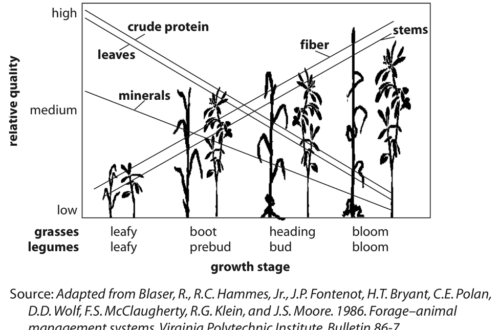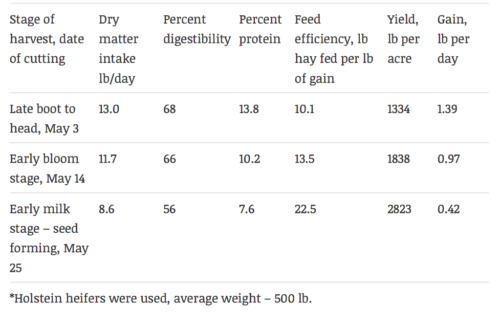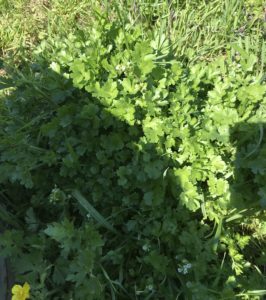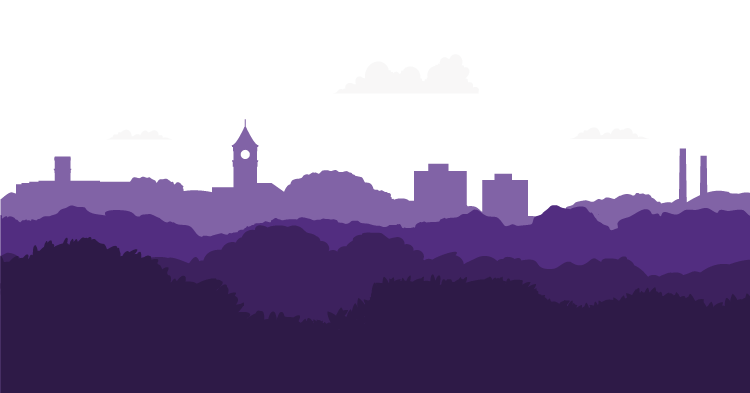Christopher LeMaster
Area Livestock and Forage Agent
Making hay is probably the most tradition steeped practice on the farm. Our fondest (and most miserable) farm memories are usually centered around the making or feeding of hay. Those of us still making hay have a passion for quality and are eternally optimistic for the next hay season. So, what makes quality hay? Is it free of weeds, proper moisture, free of foreign materials, fertilized, limed? Many studies repeatedly state the single, most important factor affecting hay quality is… plant maturity at harvest. While a high-quality bale of hay includes all the aforementioned factors, the maturity at which you harvest has the biggest influence. Forage experts agree that harvesting in the late boot to early head stage maximizes quality and quantity. Figure 1 is a forage agronomist’s classic example of optimum harvest stage. It illustrates the relationship of relative quality (Y-axis) and growth stage (X-axis) for both grasses and legumes. In the vegetative stages (leafy and boot stages for grass), the plant contains higher protein, more minerals, and higher leaf: stem ratio (increased digestibility). As the grass matures into the reproductive stage (heading and bloom stages), the plant contains more structural components (fiber, lignin) to grow the stem. This decreases digestibility and consequently animal performance.


A study from Tennessee looked at the effect of 3 different maturity stages of fescue on forage quality and animal performance. Hay was cut at late boot/early heading, early heading, and early milk/seed formation roughly 11 days apart from each stage. Obliviously Tennessee is a slightly different climate than SC so pay attention to the maturity stage rather than the dates. As expected in Table 1., forage maturity decreased intake, digestibility, and protein. Notice the biggest decrease occurred between the mid-maturity and late-maturity stages. Feed efficiency (lb of hay fed per lb of gain) is cut in half when comparing early-cut to late-cut; meaning you would have to feed twice as much late-cut hay to have similar gains. Okay, I realize the yield (lb per acre) is doubled for late cut and late-cut hay is usually much easier to cure and bale. However, the ultimate measure of hay quality for livestock producers is animal performance. Early-cut hay had 3x gains (lbs per day) compared to late cut. This more efficient hay could mean that you spend less time baling, storing, and feeding hay. Over-mature hay is poorly digestible and largely unpalatable resulting in animals refusing the hay until they are starved. Our state diagnostic lab has seen many cases of cattle starving to death with a full rumen of hay. Often this is the hay that “will beat a snowball.” I’ll leave you with two more reasons to cut earlier: 1) Higher temperatures reduce forage quality 2) Late-cut fescue invites warm-season weeds. As a plant is stressed by higher temperature, it produces more lignin (highly indigestible). The earlier we cut, the greater the chance the fescue will regrow a weed-shading canopy. Often by late May and June, the weather is too hot and dry for the fescue to successfully compete with Johnsongrass or foxtail. This issue is commonly compounded with a short mowing height (less than 4”).
It costs the same to cut early (on-time) as it does to cut late but the return is much greater for the early hay. I realize as a hay seller, we sell pounds of hay. We live in a heavily saturated hay market region, as a marketer you must distinguish yourself by quality. Our consumers are becoming “hay experts” via Google and Facebook, which makes consumer/producer relationships more challenging but also more rewarding as these consumers will pay more for hay that tests well. As a livestock producer, this simple management decision can put more pounds on your stock without greatly influencing your inputs. Each hay crop is different, so use maturity stages rather than the calendar to determine when to cut. No doubt that weather will wreck the best laid plans but start early so you can finish on time. As with anything we do on the farm, it takes more than one step/decision to achieve success so call me if you need help with the other factors of quality hay such as weeds, fertility, and species selection.


